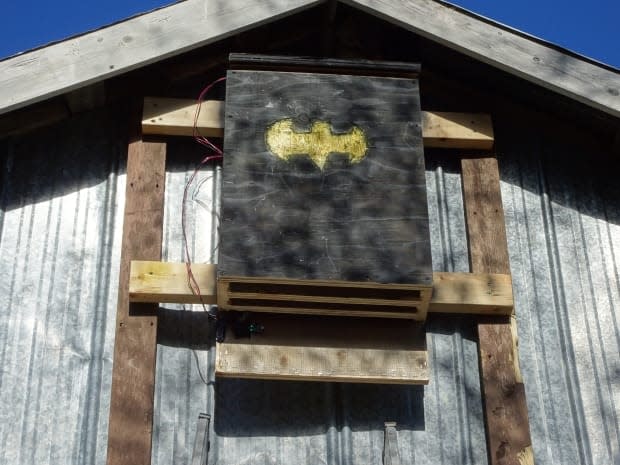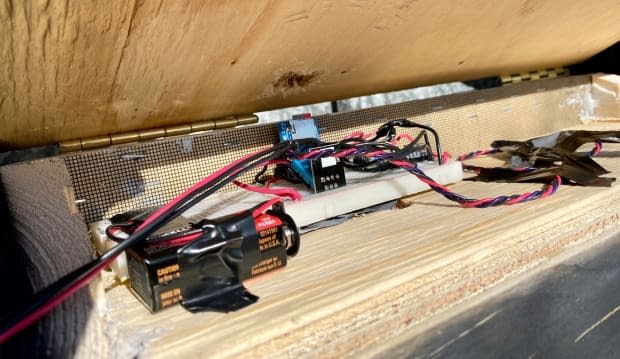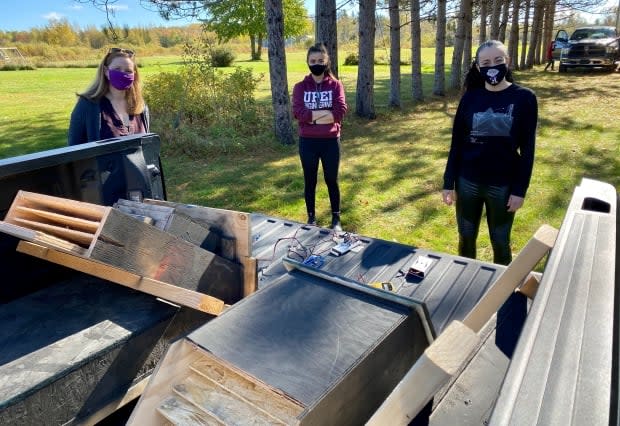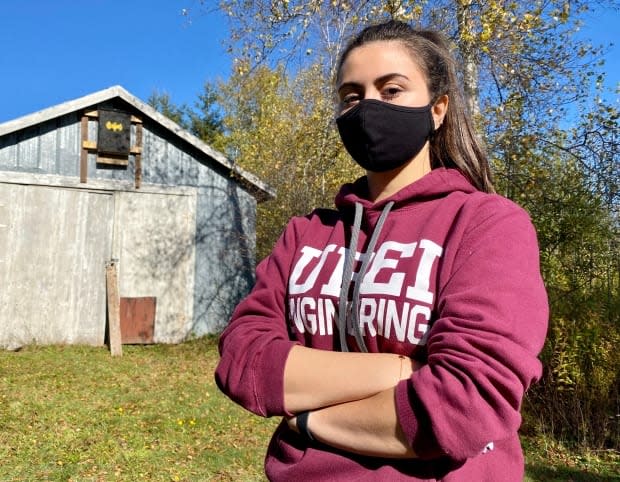Bat house project challenges UPEI first-year engineering students
High up the ladder, first-year engineering student Rosaline Antoun puts the final adjustments on her team's bat house to allow the sensors to be installed properly.
She and her classmates have spent a lot of time since the start of classes at UPEI's Faculty of Sustainable Design Engineering completing this flying mammal enclosure.
The 73 first-year students were put in teams of three and asked to build a bat house capable of holding different passive sensors to monitor the creatures.

The project is a collaboration between the first- and second-semester professors.
"It is important for students to be using real data, so this semester we're focused on communications. So that's teamwork and learning how to build, doing the drawings — all the different forms of communication," said Assistant Prof. Sister Libby Osgood.
"Next semester, they work on the data, on analysis and actually processing data."
Usually the classes would use other data, but this year, they are collecting the real-world data themselves using the sensors they are installing.

"There's a temperature and humidity sensor because bats like it to be very, very warm, so we want to know: 'How warm do they prefer it?'" said Osgood.
"There's also an ultrasonic microphone so that we can hear them chirping and hear them speaking to each other, and there is a presence sensor that uses IR [infrared] technology to detect when something goes by."

Design criteria
The students designed the bat houses to be as hospitable as possible to the winged mammals.
"Some of the conditions that we needed to think about were the size of the gap the bats could fit into and stay," said Luke McCarvill, a first-year engineering student.
There were also other factors: "What the texture of the walls would need to be so that the bats could climb and cling to the walls and ceiling, and the bats also needed to be in a warm and dry enclosure so that they could climb, sleep and give birth."

The 22 student-built houses, created large enough to hold families of bats instead of just individuals, will go up around the Island. Only four of them will be used to collect the data, though. All the bat houses will be donated after the project wraps up so that they can continue to provide shelter for Island bats.
The goal is "giving the students the first experience — hands-on — not just in building, but in creating the whole environment of engineering," said Assistant Prof. Nadja Bressan.
"The design, the deployment, the collection, and then giving the final product — in this case, for us to understand better the bats."

Project was 'engaging'
Antoun said it felt good to see the project enter the next phase after all their hard work designing and building it.
"Hard work really paid off," she said of the first "very nice" bat house to go up.
"I am hoping to have as [many] bats as we can because that will basically provide more data and will be more accurate."

Bressan said it was important for the first-year students to get a good taste of different aspects of engineering as their university time began
"This is actually empowering the students," she said. "This is how you do the whole process, from the idea to the result."
She said all they learn during the bat house project will be shared so that others can learn to build better bat houses in the future.
And for the students, that hands-on experience was useful in getting a taste of the engineering world.

"This project involved researching into both bat biology and into circuitry … [that] makes this program something that was so compelling to me," McCarvill said.
"Because I got to create a design project which involves biology, ecology and microprocessors, I found this project to be very engaging."
More from CBC P.E.I.


